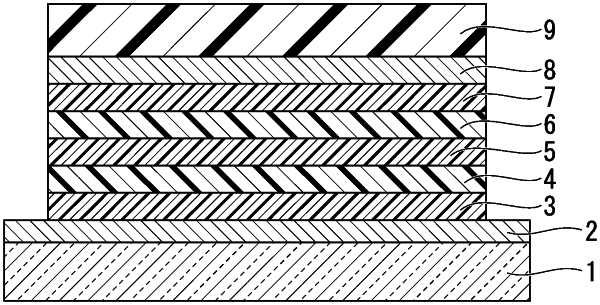| CPC H10K 50/844 (2023.02) | 11 Claims |

|
1. An organic electroluminescent element comprising at least an anode, a hole transport layer, a luminous layer, an electron transport layer, a cathode and a capping layer in this order,
wherein the capping layer comprises an amine compound having a benzazole ring structure represented by a general formula (A-1),
 wherein in formula (A-1), A and X may be the same or different from each other, and each represents a monovalent group represented by the following general formulae (B-4), or (B-6); Z represents a substituted or unsubstituted aromatic heterocyclic group; and Ar may be the same or different from each other, and each represents a single bond or a divalent group of a substituted or unsubstituted aromatic hydrocarbon group, a substituted or unsubstituted aromatic heterocyclic group, or a substituted or unsubstituted fused polycyclic aromatic group,
 wherein in formulae (B-4), or (B-6), a broken line part is used as a binding site; R12 to R15 may be the same or different from each other, and each represents a hydrogen atom, a deuterium atom, a fluorine atom, a chlorine atom, a cyano group, nitro group, a straight or branched alkyl group having 1 to 6 carbon atoms which may have a substituent, a cycloalkyl group having 5 to 10 carbon atoms which may have a substituent, a straight or branched alkenyl group having 2 to 6 carbon atoms which may have a substituent, a straight or branched alkyloxy group having 1 to 6 carbon atoms which may have a substituent, a cycloalkyloxy group having 5 to 10 carbon atoms which may have a substituent, a substituted or unsubstituted aromatic hydrocarbon group, a substituted or unsubstituted aromatic ring group, a substituted or unsubstituted fused polycyclic aromatic group or a substituted or unsubstituted aryloxy group.
|